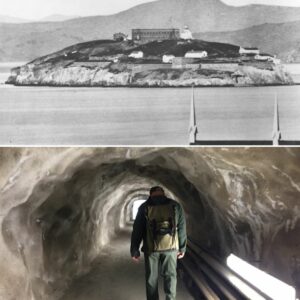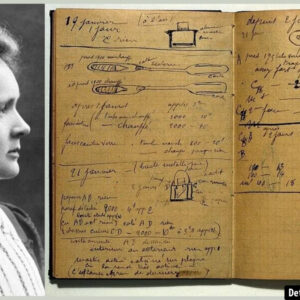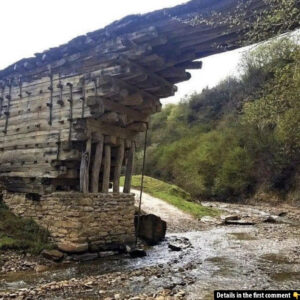In the 1870s, Egypt was a land on the brink of transformation. Amidst the cultural and political shifts of the time, one man captured the essence of this changing society through his lens—Émile Béchard. His powerful photographs offer a rare glimpse into the lives of ordinary Egyptians, from street vendors to dancers, showcasing their resilience and beauty. These captivating portraits not only document a society at the crossroads of modernization but also serve as timeless records of Egypt’s rich cultural tapestry. Through Béchard’s eyes, we can peer into a world long gone, yet still vibrant in memory.
Émile Béchard: The Man Behind the Lens
Émile Béchard, who worked in Cairo from 1869 until 1880, was an enigmatic figure in the world of photography. While his works have been widely celebrated for their historical value, much about the photographer’s life remains a mystery. Recent scholarship suggests that Béchard may have used the name “Henri” for different types of photographic projects, such as portraits and monument photography. Another theory is that his brother, Hippolyte, played a key role in distributing Émile’s photographs in France, which helped cement his legacy as one of the most influential photographers of his time.
What is certain, however, is the remarkable impact of Béchard’s photography. He focused on capturing Egyptian life through an orientalist lens, often showcasing the local figures, their customs, and their daily activities. His portraits of workers, merchants, and dancers provide an invaluable window into a world that is long gone, but whose traces still echo in Egypt today.
A Glimpse into 1870s Egypt: The World Béchard Captured

Béchard’s photographs offer a vivid portrayal of Cairo during the 1870s, a time when Egypt was undergoing significant transformations. Amidst the rise of a global capitalist economy, Egypt’s social fabric began to shift, leading to the creation of new classes and the decline of traditional ways of life. In his work, Béchard captured a wide range of subjects, from humble street vendors to performers, reflecting the diversity of Egypt’s population.
The portraits reveal not just the faces of everyday Egyptians, but also their environment: the bustling streets of Cairo, the crowded markets, and the vibrant local communities. Béchard’s intimate approach to portraiture, combined with his skillful use of lighting and composition, brings the personalities of his subjects to life. These individuals were not just figures in a larger narrative but people with rich, complex lives of their own. Whether it’s a merchant smiling softly at the camera or a dancer caught mid-movement, Béchard’s photographs reveal the human side of 19th-century Egypt.
Video
Watch the video Daily Life in Egypt: Ancient and Modern, 1925 | From the Vaults for a fascinating glimpse into Egypt’s past and present.
The Economic and Social Changes of 19th-Century Egypt

The 19th century was a time of profound change for Egypt, both politically and economically. With the increasing influence of European powers in the region, Egypt’s economy became more deeply integrated into the global capitalist system. By the end of the century, Egypt was both an exporter of raw materials like cotton to Europe and an importer of European manufactured goods. This economic shift contributed to the rise of a new ruling elite of Turco-Circassian origin, as well as a growing class of medium-sized Egyptian landowners who began to influence the country’s political and economic life.

These shifts also led to the migration of many peasants from rural areas to urban centers. As cities like Cairo expanded, the demand for workers and services grew, creating opportunities for many who had lost their land due to debt. The result was a burgeoning working class, including civil servants, teachers, technicians, and laborers. The middle class, however, faced increasing pressure as Western imports began to flood the market, threatening traditional crafts and industries.
Key Figures and Captivating Moments in Béchard’s Photography

Béchard’s photographs are more than just snapshots of daily life—they are visual records of an era in transition. His subjects were not merely posed for portraits; they were living, breathing individuals who embodied the essence of a transforming society. Many of Béchard’s portraits feature members of Egypt’s upper classes, such as wealthy landowners, religious leaders, and dancers, but he also focused on those who lived in the margins—the street vendors, the performers, and the artisans who were beginning to disappear in the face of industrialization.
The vibrancy of Béchard’s work lies in the wide array of personalities and environments he captured. Whether it’s a woman in traditional dress, a shopkeeper standing proudly in front of his stall, or a group of workers gathering in the streets, Béchard’s images give us an intimate, often emotional view of the people of Egypt. These portraits do more than just document; they reveal the dignity, strength, and resilience of people in a rapidly changing world.

The Evolution of Egyptian Society: Political and Cultural Shifts
By the late 19th century, Egypt was experiencing profound political and cultural shifts. The influence of Western powers was growing, and with it, Western ideas began to permeate Egyptian society. Western art, literature, and technology began to shape Egyptian life in new and often disruptive ways. As European imports flooded the market, traditional industries, such as textiles and glassblowing, began to decline, while new industries—such as sugar refining and cigarette manufacturing—took their place.

In addition to economic changes, Egypt was also undergoing a cultural transformation. The rise of a Westernized elite led to the spread of European ideals in art, fashion, and education. At the same time, the traditional middle class—comprising religious scholars and merchants—began to lose influence, and the growing urban working class faced mounting challenges in an increasingly industrialized world. Béchard’s photography offers a glimpse of these shifting dynamics, capturing a moment when Egypt was at the crossroads of modernization and tradition.
The Legacy of Béchard’s Photography

Béchard’s work is not just important because it provides us with a glimpse into the daily lives of Egyptians in the 1870s; it also offers a broader view of Egypt’s transformation during the late 19th century. His images are a testament to the resilience and diversity of Egyptian society during a time of great change. Through his portraits, Béchard documents a world that was on the brink of modernization, but still rooted in deep cultural traditions.
Today, Béchard’s photographs are valuable historical documents. They allow us to see Egypt not just through the eyes of European travelers or colonial authorities, but through the lens of an artist who was deeply connected to the people and the culture of Cairo. His work remains an essential part of the photographic history of Egypt, providing a vivid, multifaceted portrait of a society at the cusp of a new era.


























Video
Watch the video What Did Ancient Egypt Look Like? (Cinematic Animation) to visually explore the wonders of ancient Egypt in stunning detail.
Conclusion: Reflecting on the Changing Face of Egypt
Émile Béchard’s photographs of 1870s Egypt provide a fascinating window into a time of great change. Through his lens, we see not just the faces of Egypt’s people but the spirit of an era on the brink of modernization. His work captures the contrasts and complexities of 19th-century Egyptian society, offering a visual record that remains invaluable to historians, photographers, and anyone interested in understanding the rich cultural heritage of Egypt. As we look back at these captivating portraits, we are reminded of the importance of preserving and celebrating the stories of those who lived through times of transformation.



